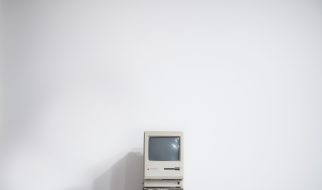
You don?t want either of them in your bed, but do you know the difference between bed bugs and house dust mites?
The main noticeable difference is size. Bed bugs are visible to the naked eye. Adult bed bugs are about 5?7 mm in size [1]. So they are comparable to the size of an apple seed or about half the area of your pinky fingernail. In contrast, dust mites can really only be seen under the microscope. House dust mites are about 0.1?0.4 mm long [2], less than one tenth the size of a bed bug, at least. House dust mites are translucent to white in color and have been described as ?globular? in shape [3]. Although young bed bugs (called nymphs) are translucent to yellow before they have fed, once they have a blood meal they are red. Adult bed bugs are brownish and have flat, oval shaped bodies before feeding and are more reddish, elongated and round after feeding [1]. Other differences in appearance come down to the different categories that these organisms belong to. Bed bugs are members of the insect class, which means (among other things) that they have a pair of antennae and three pairs of legs. Dust mites on the other hand aren?t insects at all! They belong to the arachnid class, so they have eight legs, no antennae and are related to spiders.
What about feeding and lifestyle? Well, bed bugs are parasites. This means that they benefit at the expense of their hosts, and unfortunately their hosts can be humans. Specifically, bed bugs pierce the skin and feed on the blood of vertebrate animals including humans. Unlike some other blood feeding parasites, bed bugs don?t remain on their host. Once they have finished their meal, which takes about 5 minutes, they move away from their ?victim? and hide in a nearby nook or crevice. This is the reason why although it is physically possible to see bed bugs with the unaided eye, you often won?t catch site of them on your bed or other furniture [1]. House dust mites are not parasitic and they cannot bite you. Dust mites feed on ?dander,? which is skin scales or flakes shed from people and animals and often found in dust [4]. Lastly, adult bed bugs can live for 6?12 months, though this depends on feeding [5], while adult dust mites have an approximate life span of 1?2 months [4].
Despite all their differences both bed bugs and dust mites can cause problems for the people whose houses they share. For some people bed bug bites cause an itchy, red skin reaction while other people don?t react at all. The greater harm can be psychological. Many people are understandably greatly distressed by bed bug infestations [1]. House dust mites cause harm because of the allergens present in their bodies, fecal matter and secretions. Inhalation of these dust mite allergens can cause symptoms such as asthma attacks and wheezing
So you can see that although people can sometimes mix up these indoor pests, they are actually quite different. In this blog post we have only scratched the surface of the bed bug and dust mite fields of knowledge. Interested in learning further? Read our other articles on bed bugs and house dust mites for more in depth information.
A version of this post titled ?Bed Bugs, House Dust Mites ? What?s the Difference?? originally appeared on the airmid healthgroup blog on September 23, 2016.


